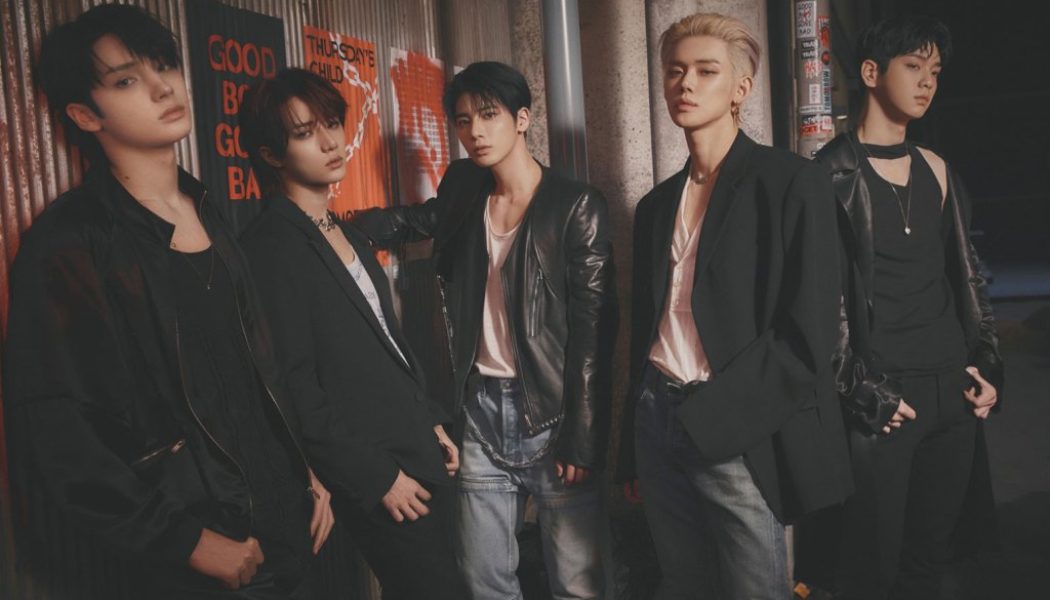
The Ledger is a weekly newsletter about the economics of the music business sent to Billboard Pro subscribers. An abbreviated version of the newsletter is published online.
An exchange-traded fund, or ETF, focused on Korean music started trading on the NYSE Arca exchange on Thursday, giving American investors a means to buy shares of companies that trade on exchanges in South Korea. But the ETF stands out for another reason: a bundle of K-pop stocks will carry less risk than standalone companies that rely on dozens of labels, each with a handful of top artists as well as deep catalogs.
Trading under the aptly named ticker KPOP, the ETF includes the stocks of 30 corporations, including several music companies: HYBE, the home of K-pop megastars BTS and up-and-coming acts Tomorrow X Together and Enhypen; YG Entertainment, home to BLACKPINK, the female quartet that debuted at No. 22 on the Hot 100 last week, as well as Big Bang; SM Entertainment, home to SuperM, NCT 127 and Girls’ Generation, among others; and JYP Entertainment, which houses Stray Kids and Twice. Those are enviable lineups of established and future stars. But, relative to other music companies, they are small rosters. When packaged together, however, they involve considerably less risk for investors.
Investors love diversification because it reduces the downside risk that a company will falter. Investors felt the impact of HYBE’s reliance on BTS after the group announced on June 14 it would take a hiatus to focus on solo projects. The company’s share price dropped 27.5% the next morning and, as of Friday’s closing price, still stands 12.7% below the pre-announcement level.
BTS accounted for 60% of HYBE’s revenue in 2021, according to one analyst’s estimate. That reliance eased after HYBE’s April 2021 acquisition of Ithaca Holdings, which added artist management (Justin Bieber, Ariana Grande and others) and Nashville’s Big Machine Label Group to the company’s portfolio. But BTS — encompassing touring, sponsorships, merchandise, recorded music and artist management — remains vital to HYBE’s financial prospects, to the point where investing in HYBE is a bet on BTS.
An ETF — in this case, no company has more than 10% of the total value — gives investors more diversity than they can get investing in the standalone companies. K-pop-driven music companies simply have smaller rosters than major labels such as Universal Music Group (over 3 million recordings and nearly 4 million owned and administered compositions) and Warner Music Group (over 100,000 songwriters and composers) and even smaller entities such as Believe (over 1 million artists served by its distributor, TuneCore, and its labels) and Reservoir Media (over 140,000 copyrights).
Securitized music assets also provide investors with diversification that reduces the risk of a weak performance by any one artist or song. Take Hipgnosis Music Assets 2022-1, a $221.7-million bond backed by the royalties of over 950 compositions. The top five songs account for 28% of net publisher share and net label share, according to Kroll Bond Rating Agency’s report. The top five artists represent 61% of NPS/NLS — which does signify a level of concentration greater than a major label. But Kroll considers the royalties, spread across several publishing administrators, to be diversified and assigned it an A- rating (meaning “of high quality” and “expected to weather difficult times with low credit losses”). In fact, only 23% of the NPS/NLS of the bond’s songs come from compositions less than 10 years old. That means steady streaming royalties from quarter to quarter, year to year.
K-pop companies also differ from major labels in the timing of their revenues. A major like UMG or WMG— each a collection of record labels and publishers with large catalogs — earns most of its revenues from streaming royalties that, across a huge catalog, is steady from one quarter to the next. Not only do K-pop companies have fewer releases, but they also rely heavily on physical products, such as multiple editions of titles on CD. The resulting revenue streams are more likely to come in chunks, not smoothly from quarter to quarter . For example, SM Entertainment’s second quarter album/digital music revenue dropped 28.2% year-over-year; the company released six albums in the quarter versus eight albums in the prior-year period.
A K-pop company’s business model does add diversification, however. While SM Entertainment’s music revenue — its largest revenue source — fell 28.2%, its earned concert revenue (after earning almost zero a year earlier) posted a 137% increase in MD/licensing/photoshoot revenue. Along with an 18.1% improvement in appearances revenue (from television, advertisements and events), the company’s total revenue declined only 5.2% year-over-year. HYBE’s acquisition of Ithaca Holdings provided geographic diversification, too, by expanded the company beyond South Korea and giving it a stronger presence in the U.S. Still, for investors, an ETF reduces risk and improves diversification better than new signings and acquisitions.
[flexi-common-toolbar] [flexi-form class=”flexi_form_style” title=”Submit to Flexi” name=”my_form” ajax=”true”][flexi-form-tag type=”post_title” class=”fl-input” title=”Title” value=”” required=”true”][flexi-form-tag type=”category” title=”Select category”][flexi-form-tag type=”tag” title=”Insert tag”][flexi-form-tag type=”article” class=”fl-textarea” title=”Description” ][flexi-form-tag type=”file” title=”Select file” required=”true”][flexi-form-tag type=”submit” name=”submit” value=”Submit Now”] [/flexi-form]










Tagged: business, Business news, entertainment blog, Finance, HYBE, International, JYP Entertainment, K-Pop, music blog, Music Stocks, SM Entertainment, The Ledger, yg entertainment